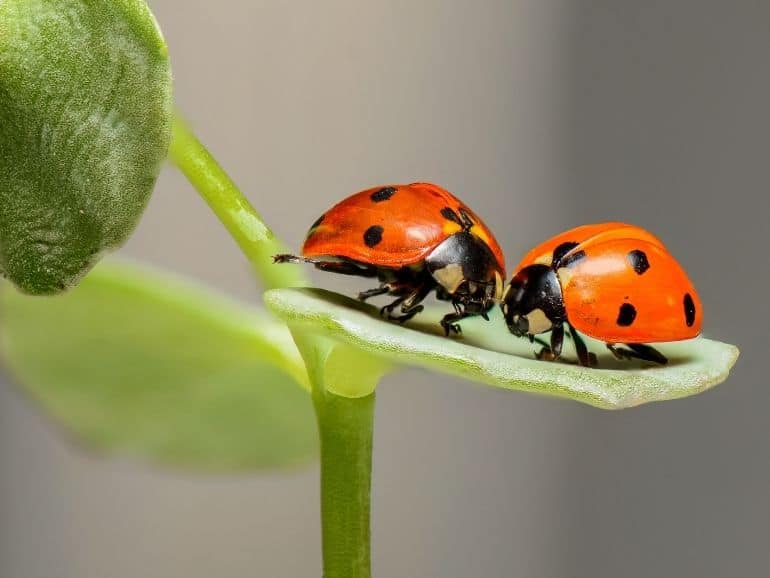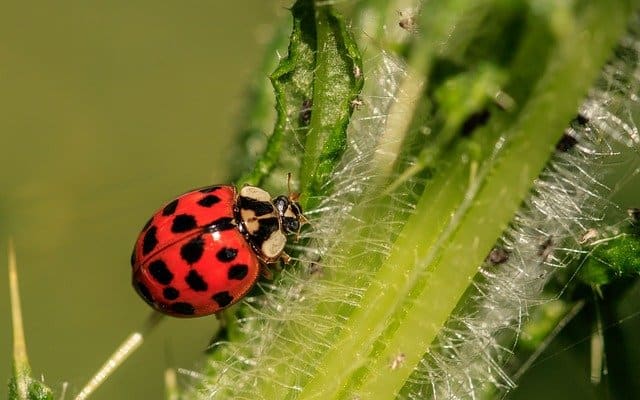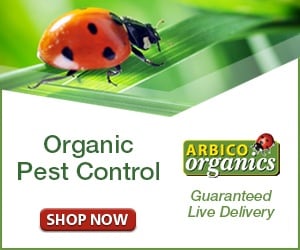Have you ever seen a bug in your home, smashed it on instinct, only to lift your hand or your book to reveal it was a good bug?
We’ve all been there.
More often than not, we’ve all been in the situation where we see a bug but we don’t know if we have to kill it, whether it’s helpful or harmful to our yard, our garden, or our home. That’s why it’s always nice to know about the five good bugs around your house you should avoid killing.
1 – Bees
Let’s start with bees. Bees are one of the most important bugs for your yard, and your local ecosystem. You might be surprised how many people don’t know the difference between bees, the helpful fliers, and wasps, the harmful fliers. Bees can be easily recognized by their furry bodies striped with yellow and black, and their translucent wings. Honey bees are simply a much larger and hairier iteration, but otherwise look much the same. Honey bees tend to live in colonies located in hollow logs, leaf litter, or the soil while you might see regular bees in a beehive in a tree.
Bumblebees are hairy pollinators that rarely bite, feed on nectar, and help pollinate plants. Having bumble bees in your yard will encourage growth for all of your flowering plants. If some of them make their way into your home, of course you can help them find their way back out the open window, but you shouldn’t kill them.
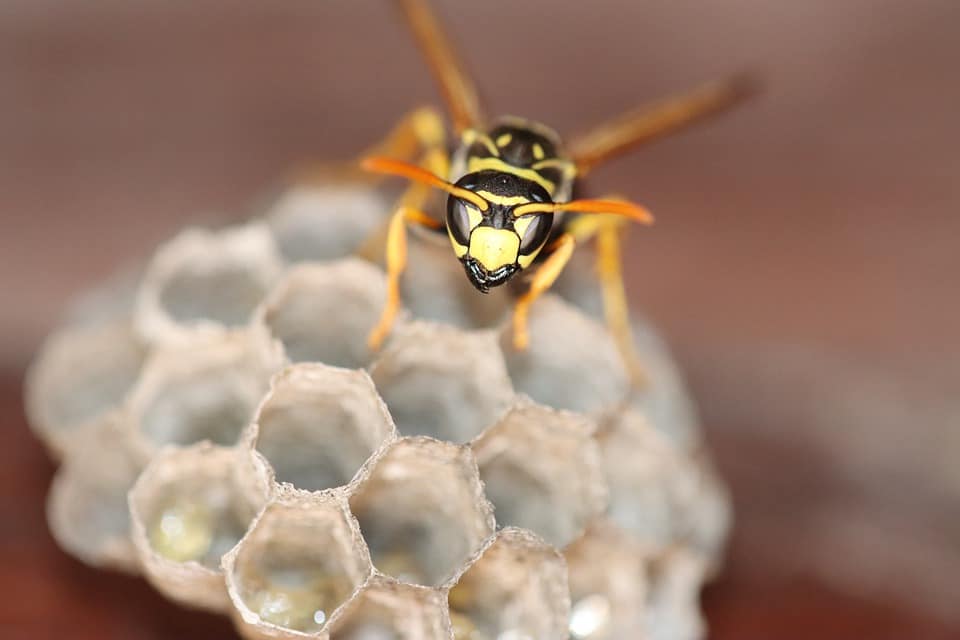
Image by Roland Steinmann from Pixabay
Tip: If you don’t have bees in your area but you want to, you can plant lots of flowering items around your house,window sills, or in your garden to try and attract pollinators.
You might be more accustomed to their nearby neighbors, wasps or other similar bugs that take on the same appearance as a wasp or a bee in order to capitalize on its fear factor. If you know which bugs to leave alone, you will also know when it’s time to call for pest control. (These you don’t have to protect, as they can bite and cause damage to your home).
2 – Ladybugs
Ladybugs, sometimes called ladybirds or lady beetles, are one of the best bugs to keep around your house if you want natural pest control. Ladybugs are very easy to see because of their circular shape, the black head, and the beautiful red wings with black dots that, when together, form what looks like a hardened round shell.
Ladybugs have voracious appetites, and they will devour thousands of tiny insects on a single plant like scale insects, white flies, or aphids. If you have a problem with any of these smaller, harmful insects sucking away the sap and the life force from your plants, introduce ladybugs where they don’t already exist naturally.
Tip: If you need ladybugs for pest control, there are certain times of the year when you can purchase hundreds of ladybugs to introduce to your garden. You can find these at local garden stores, at pest control companies, or online.
3 – Lacewings
Lacewings, known for their long, beautiful translucent wings, might seem a little frightening when they flutter into your home, but you don’t want to kill them. Lacewings are easily identifiable by their thin, long verdant body, a bright green like a stick of gum. Their beautiful lace-like wings extend far beyond the length of their body, and on the opposite end you will see the two antennae that are roughly the same size as the body. You are much better off helping them find their way back to your plants because they are another helpful insect.
If you are interested in natural pest control lacewings are another bug you must protect. The larvae eat whitefly and aphid colonies, which is why female lacewings will actually lay their eggs in the middle of these colonies. Lacewings represent yet another voracious predator, even more aggressive than ladybugs.
If you have lacewings in your home, or you see them in your garden and you want to help them proliferate and attack other insects, you will need to control the ant population in your area – ants will eat lacewing eggs and side with the aphids. Luckily there are 9 natural solutions for killing ants you can employ.
4 – Spiders
Another friendly devourer of all things annoying and detrimental to your plants are spiders. Spiders technically fall under the category of arachnid and may not be considered a bug by everyone, but for the sake of argument, they are one of the most helpful bugs you can have – not just in your garden or your yard, but directly in your home.
If you see a spider in your house, it’s natural to react poorly. Spiders are creepy for most people. But inside the home they will attack a lot of insects and bugs that you don’t want, including ants, flies, aphids, and perhaps most importantly, mosquitoes.
So when you head out to the yard to spray for bugs, try to avoid damaging any spider webs or their occupants.
Related Post: Plants that Repel Spiders
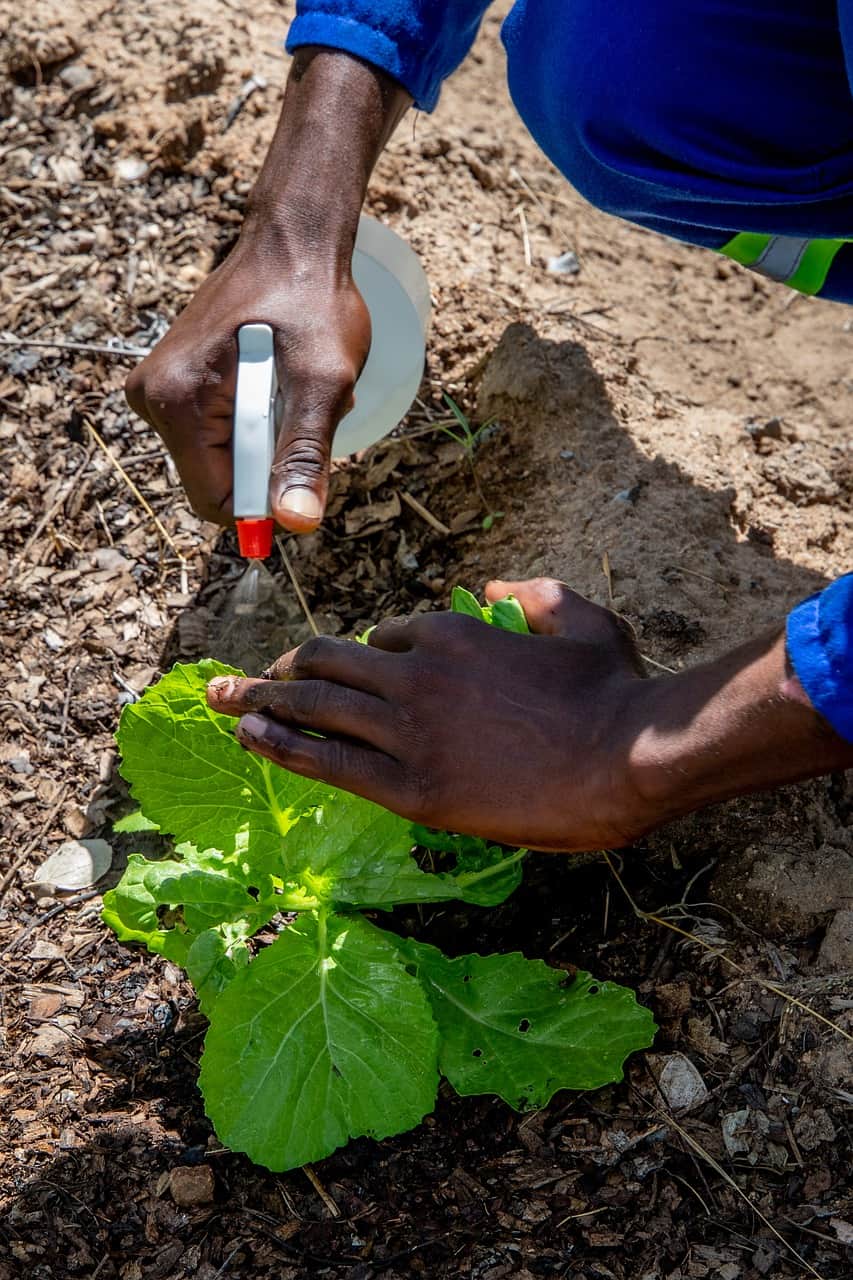
5 – Ground Beetles
The fifth and final good bug you should avoid killing around your home are ground beetles. Ground beetles are identifiable by their black, hardened shell that gives off an iridescent green hue. Ground beetles are nocturnal hunters so when the spiders and lacewings have had their fill and have gone to sleep, the ground beetles will wake up and destroy any remaining insects or eggs that will soon attack your plants, such as caterpillars.
Most of the time ground beetles will be found under leaf litter, in your compost pile, or in any other dark, covered spot in your yard. If you are going through your garden and find ground beetles under debris, leave them be.
There are of course many other good bugs around your house you should avoid killing, not just these five: dragonflies, earthworms, butterflies, and the praying mantis. The more you learn about beneficial bugs, the more you can introduce natural pest control measures into your home. The bugs that you really don’t want in your yard can be repelled naturally with selective plants. If that doesn’t work, contact a pest exterminator.
Author’s bio:
Luqman has been a pest control technician for over 20 years. He is passionate about solving people’s pest and wildlife control problems through innovative, eco-friendly and humane methods. He believes that pest control is a science, and feels that his function in his community is very important since he helps people live in peace, without causing unnecessary harm to animals.

